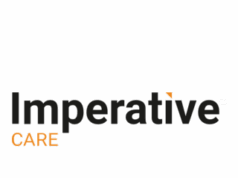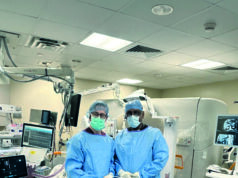Data that was presented at the American Urological Association (AUA) Annual Meeting (4–8 May, San Deigo, USA) demonstrated that treatment for benign prostatic hyperplasia with GreenLight XPS laser therapy with MoXy fibre (American Medical Systems), instead of transurethral resection of the prostate (TURP), resulted in significantly shorter hospitalisation, catheterisation, and recovery times for patients, while maintaining equivalent safety and efficacy.
“This trial provides important new information that may cause many urologists and patients to choose GreenLight laser therapy as an alternative to TURP, which has long been regarded as the standard surgical treatment for benign prostatic hyperplasia,” said Alexander Bachmann, University Hospital Basel, Switzerland, and principal investigator in the GOLIATH study. “With faster recovery times, less time spent in the hospital and less catheterisation time than TURP, GreenLight is a highly effective therapy for the treatment of benign prostatic hyperplasia.”
The findings from the prospective, multicentre, randomised GOLIATH trial, demonstrated the equivalence in safety and effectiveness of the 180W GreenLight XPS system for addressing lower urinary tract symptoms associated with benign prostatic hyperplasia.
“GreenLight laser therapy is the leading minimally invasive laser surgical treatment for benign prostatic hyperplasia world-wide, and offers patients a proven innovative option to TURP,” said Camille Farhat, president of AMS. “Left untreated, benign prostatic hyperplasia, and the resulting symptoms, can cause permanent damage to the urinary system. We look forward to helping more men who undergo surgery for benign prostatic hyperplasia recover faster and potentially return to their active lifestyles more quickly.”
GOLIATH study
The GOLIATH study was designed, according to a press release, to compare TURP and photo-selective vaporisation of the prostate (PVP) with the 180W GreenLight XPS system using a variety of symptomatic, functional and safety outcome measures. The study evaluated 269 patients from 29 sites in 11 European countries based on six-month post procedural results. All adverse events were adjudicated and classified by an independent, blinded clinical events committee.
Key trial findings included:
- Equivalency in safety, as evidenced by the number and rate of adverse events, and efficacy, as determined by International Prostate Symptom Score and Qmax (peak urinary flow rate)
- Superiority of GreenLight XPS in recovery times including shorter catheterisation times, shorter hospital stay, and a faster return to a stable health status
- Significantly lower rate of short-term re-intervention with GreenLight XPS
- Numerically fewer bleeding and dysuric events with GreenLight XPS than TURP
- Comparable prostate tissue volume and prostate specific antigen reduction













